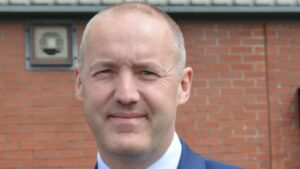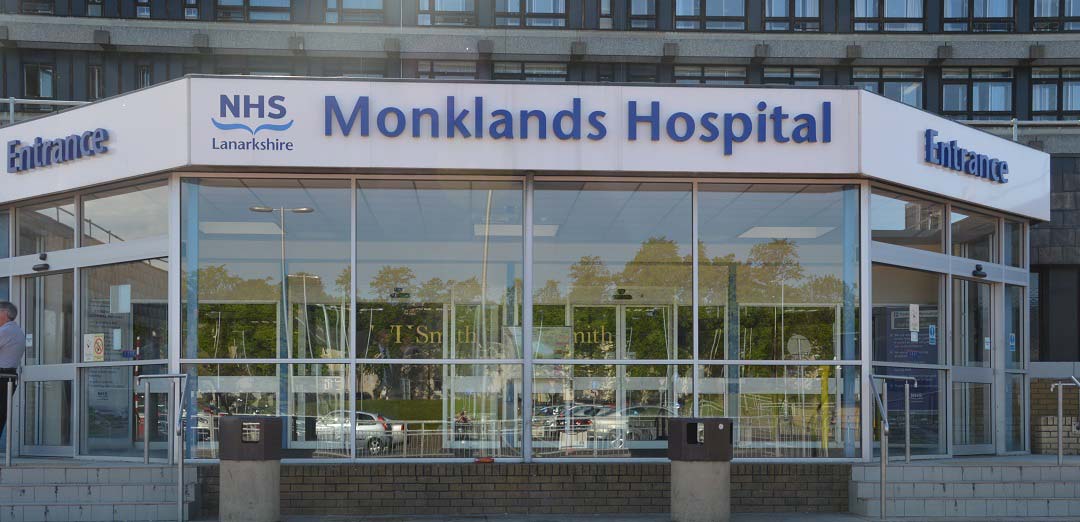Say hello to our core team for the Monklands Replacement Project (MRP).
They’re progressing our exciting plans for the new University Hospital Monklands (UHM), with the fantastic support of many colleagues at UHM and throughout NHS Lanarkshire.
Following recent Scottish Government approval of Wester Moffat as the preferred site for the project, the team are pushing ahead with the development of an outline business case and have established sub-groups to oversee a number of workstreams.
Clinical Advisory Group (CAG)

Dr Jim Ruddy, MRP clinical lead – medical, said: “Colleagues across NHS Lanarkshire have worked over the last few years to develop a clinical model for the new hospital. As we push on to refine the reference design of the new hospital, the CAG will be kept updated to ensure that the clinical model and reference design align with the wider Board strategy.”
Digital

“The new Monklands has the ambition to be ‘Scotland’s first digital hospital’” said MRP project manager Kathryn Henderson. “We’ve been focused on developing a strategy around how MRP will deliver this vision and align it with NHS Lanarkshire’s existing digital strategy. We’re now identifying digital requirements – a complex task that must take account of existing, planned and future technologies to ensure the hospital can adapt to the changing digital needs of the future.”
Equipment

MRP finance lead Brian McWatt explained: “This group is taking forward the planning of the equipping process and will work closely with the architects to develop equipment schedules on a room-by-room basis. We’re supported by Health Facilities Scotland and Currie & Brown, the MRP lead advisors, who both bring recent experience in the equipping of new-build hospitals.”
Facilities Management (FM)/Infection Prevention and Control (IPC)/Key Decisions
MRP head of projects George Reid leads on all three of these groups.

He said: “They make recommendations to the project team so external advisors can be provided with the necessary direction.
“FM group decision categories include, among other things, workforce, service redesign, design matters, and the BIM (Building Information Modelling) process. The group also covers ‘soft landings’ – aligning the interest of those who plan, design and construct the building with those who subsequently operate and use it – and the ‘security minded estate’ approach.
“The IPC group makes recommendations to the project team so external advisors can be provided with the necessary direction. Decisions cover several categories including general design relating to infection control, lessons learned and innovation, infection control committee reporting, and frequency of review of HAI SCRIBE (Healthcare Associated Infection System for Controlling Risk in the Built Environment).”
“The key decisions group also makes recommendations to the project team to provide guidance to external advisors. Key decision categories include, among other things, project-wide decisions, bedroom/ward matters, theatres, IT, and sustainability and environment.”
Operational Command Centre (OCC)
 An OCC gives real-time information in one place on the status of a range of healthcare provision across different locations,” said MRP redesign lead Donna McHenry. “This group has representatives from the acute sites, the flow hub, health and social care partnerships, property and support services division, and eHealth. With the roll-out of electronic observations progressing, the group will be identifying areas where an OCC could provide further clinical and operational benefit for NHS Lanarkshire/H&SCPs.”
An OCC gives real-time information in one place on the status of a range of healthcare provision across different locations,” said MRP redesign lead Donna McHenry. “This group has representatives from the acute sites, the flow hub, health and social care partnerships, property and support services division, and eHealth. With the roll-out of electronic observations progressing, the group will be identifying areas where an OCC could provide further clinical and operational benefit for NHS Lanarkshire/H&SCPs.”
Service Redesign
Donna added: “A template has been developed to describe the service redesign and transition actions for each workstream, including the workforce implications. We’ll be working with organisational development colleagues on the ‘change management’ approach for MRP to support transition plans and service redesign.”
 “Allied to service redesign is the key task of workforce planning,” said Fiona Cowan, MRP clinical lead – nursing. “We’ve engaged with various stakeholders throughout the organisation, discussing the planned changes for new hospital with clinical leads, service managers and colleagues at other Boards.
“Allied to service redesign is the key task of workforce planning,” said Fiona Cowan, MRP clinical lead – nursing. “We’ve engaged with various stakeholders throughout the organisation, discussing the planned changes for new hospital with clinical leads, service managers and colleagues at other Boards.
“We’re using available national ratios and workload tools in conjunction with professional judgement to quantify the clinical and non-clinical staffing requirements and have had discussions with other Boards who have single-room hospitals. Digital solutions will also the support the workforce to improve efficiency and release time to care – this will be quantified through various tests of change.”
Stakeholder Engagement Group

MRP communications officer Bob Smyth said: “We’ll continue to ensure best practice in upcoming engagement work, drawing on the valuable input of the group. It includes staff and public representatives, and was established to support and guide us on how we inform, engage and consult with colleagues and the wider community.”
Business support update

MRP business manager Lisa Elliott said: “Following site approval, we’ll continue to focus on developing the outline business case for submission to the Scottish Government.


My admin colleagues, Carole and Laura, are providing fantastic assistance as we support the MRP governance structure to move forward with the key milestones in the programme.”
Project director

MRP director Graeme Reid added: “We look forward to detailing the significant clinical and economic benefits that the construction of the new hospital will bring to the people of Lanarkshire in our outline business case later this year. We’ll share more on our exciting plans in the coming months to ensure our staff and the public are fully aware of developments and can continue to provide input.”
Contact the MRP team – MRP.Team@lanarkshire.scot.nhs.uk, 01236 713348
For more information see the MRP webpage – www.monklands.scot.nhs.uk.



